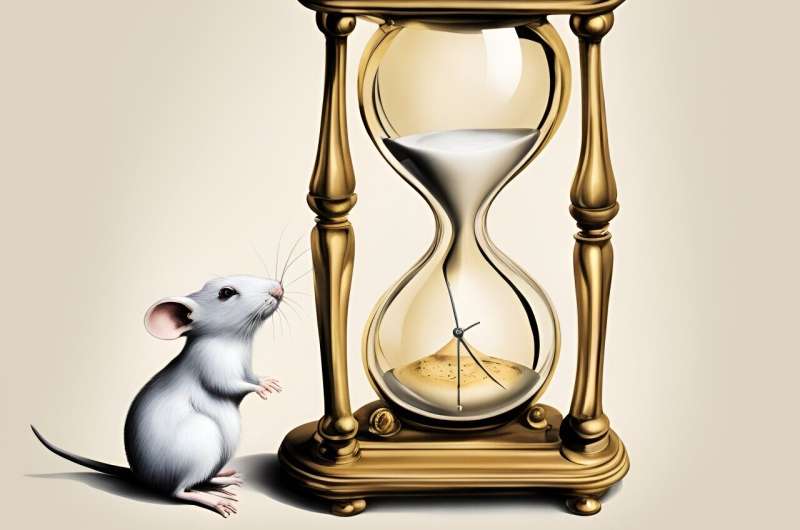This article has been reviewed according to Science X's editorial process and policies. Editors have highlighted the following attributes while ensuring the content's credibility:
fact-checked
trusted source
proofread
The intricate dance of time and touch: Insights from the somatosensory cortex

The passage of time is sensed, perceived, and experienced, but—unlike for touch, vision, hearing, and olfaction—there exist no sensory receptors for time. This fact has long tantalized neuroscientists with the possibility that sensing time might "piggyback" on true sensory modalities.
New research, in fact, demonstrates that the percept of time embodied within a tactile experience is rooted in the dual functionality of the somatosensory cortex. Professor Mathew Diamond and his SISSA research team recently published their findings in Nature Communications, shedding light on the intricate interplay between the sense of touch and the sense of time.
As we process stimuli received through the skin, neurons in the somatosensory cortex robustly represent the detailed features of the stimuli, culminating in the subjective experience of touch. However, was the stimulus brief or extended in time? How does the perception of elapsed time emerge? The research team's results indicate how the somatosensory cortex contributes to the perception of time.
Utilizing optogenetics, a technique enabling the modulation of neuronal activity through the application of light to the cortex, the study established a connection between two seemingly distinct experiences—the "what" and the "how long" of a stimulus. Optogenetic intervention influenced perceived intensity in rats trained to assess vibration intensity while disregarding duration. Conversely, optogenetic intervention influenced perceived duration in animals trained to evaluate vibration duration while disregarding intensity.
These findings not only affirm the expected function of the somatosensory cortex in constructing the tactile sense but also support the notion that the perception of time is rooted in a widespread network of brain areas with diverse functions, including touch. This research lays the foundation for future studies exploring the intricate relationship between sensory experiences and the perception of time.
A widespread network for time perception
"The neuronal mechanisms underlying the perception of the duration of sensory events are still not fully known," explains Professor Mathew Diamond, the research coordinator.
"It is believed that, rather than relying on a single dedicated brain center, the perception of time emanates from networks of neurons distributed across various brain regions. The study's findings demonstrate that the sensory processing stage of the cortex is one component of the network. This means that one population of cortical neurons can give rise to two distinct sensory experiences, emphasizing the interconnected nature of time perception and touch."
Previous work by the SISSA research group hinted at the integration and accumulation of impulses in the sensory processing pathway as a potential mechanism underlying time perception. Now, optogenetic techniques were employed to test this hypothesis directly, enabling the manipulation of neuron activity at a specific target location.
Diamond explains, "If there is a behavioral effect of optogenetic intervention, the only explanation is that the target neurons are somehow involved. Targeting similar sets of neurons in the two groups of rats produced two different outcomes in their behavior. Increasing neuronal firing by optogenetics increased the perceived duration in the 'duration' rats and increased the perceived intensity in the 'intensity' rats."
"Since both percepts involve an overlapping set of neurons, we describe the two signals as 'multiplexed' in the somatosensory cortex. As a final step, we constructed a mathematical model that goes from the physiology of cortical neurons to the final percept. The model points to potential cellular mechanisms for building elaborate percepts from neuronal firing."
The study concludes that the perception of time is intricately intertwined with touch, emerging within the tactile sensory representation. This insight opens the door to exploring the experience of time through the lens of sensory encoding, offering new avenues for understanding the complex relationship between sensing the external world and sensing time.
More information: Sebastian Reinartz et al, Direct contribution of the sensory cortex to the judgment of stimulus duration, Nature Communications (2024). DOI: 10.1038/s41467-024-45970-0





















